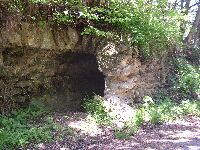
1. Purpose
What do Roman aqueducts do?Here a set of questions with relevant answers, some of which are linked to related subjects as discussed in other places within this website www.romanaqueducts.info
Additional questions and remarks are most welcome via w.d.schram 'at' romanaqueducts.info
Questions
- What is a Roman aqueduct?
- What do Roman aqueducts do?
- What was the purpose of an aqueduct?
- Why were the Roman aqueducts made?
- Who built the first (Roman) aqueduct?
- Why did the Romans built aqueducts?
- When were Roman aqueducts built
Answer
An aqueduct is a channel or pipe-line to transport water over a greater distance from a water source to its destination (a city, farm, industry or mill) where it is used or distributed. Typical aqueduct pipes were 0,10 - 0,30m in diameter; aqueduct channels were mainly subterranean, 0,75 m wide and 1,25 m high, 5 - 125 km long (!), with a very gentle, regular slope downwards (less than 1%), sometimes equipped with tunnels, raised on substructures or arcades.The first Roman aqueduct was built for the city of Roma by censor Appia Claudius Caecus, hence called Aqua Appia, and operational in 312 bc. Over 1000 Roman aqueducts are known today, built between 312 bc and the end of the Roman Empire (about 500 ad) and beyond.